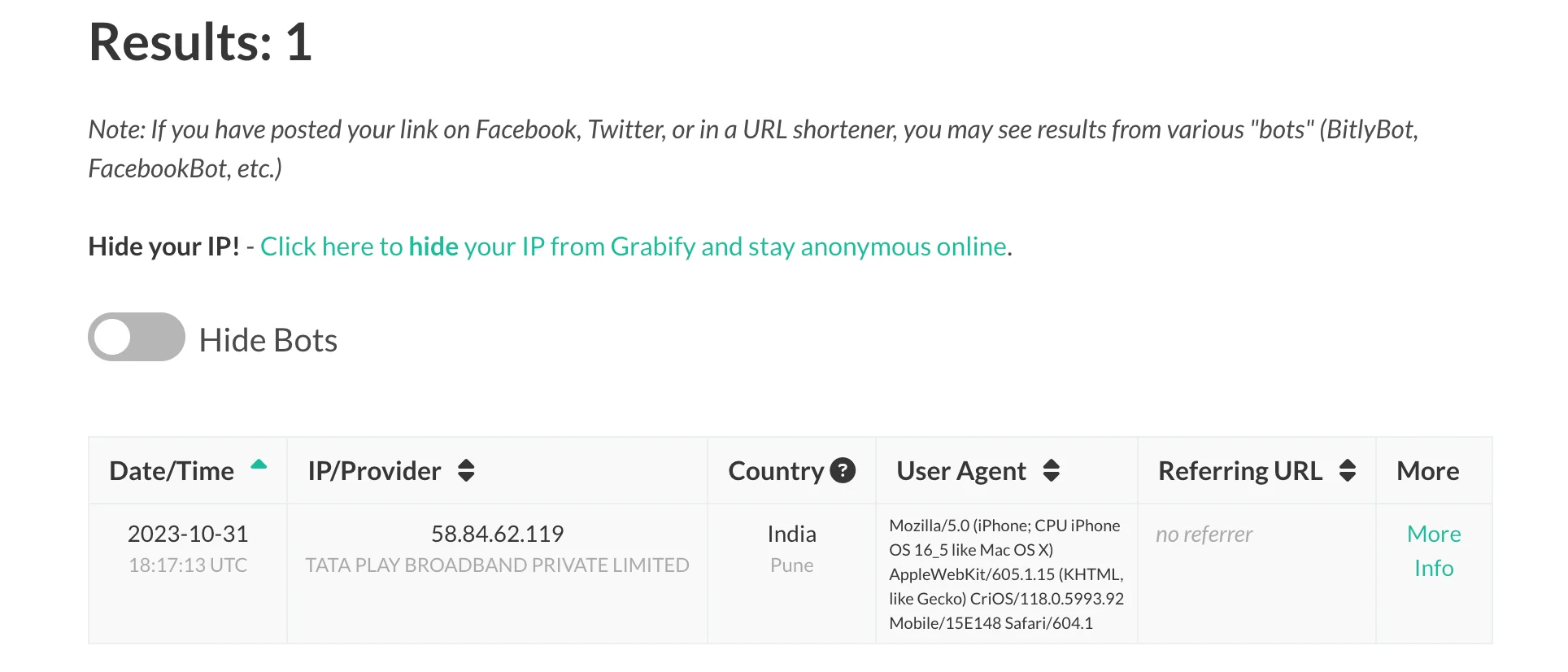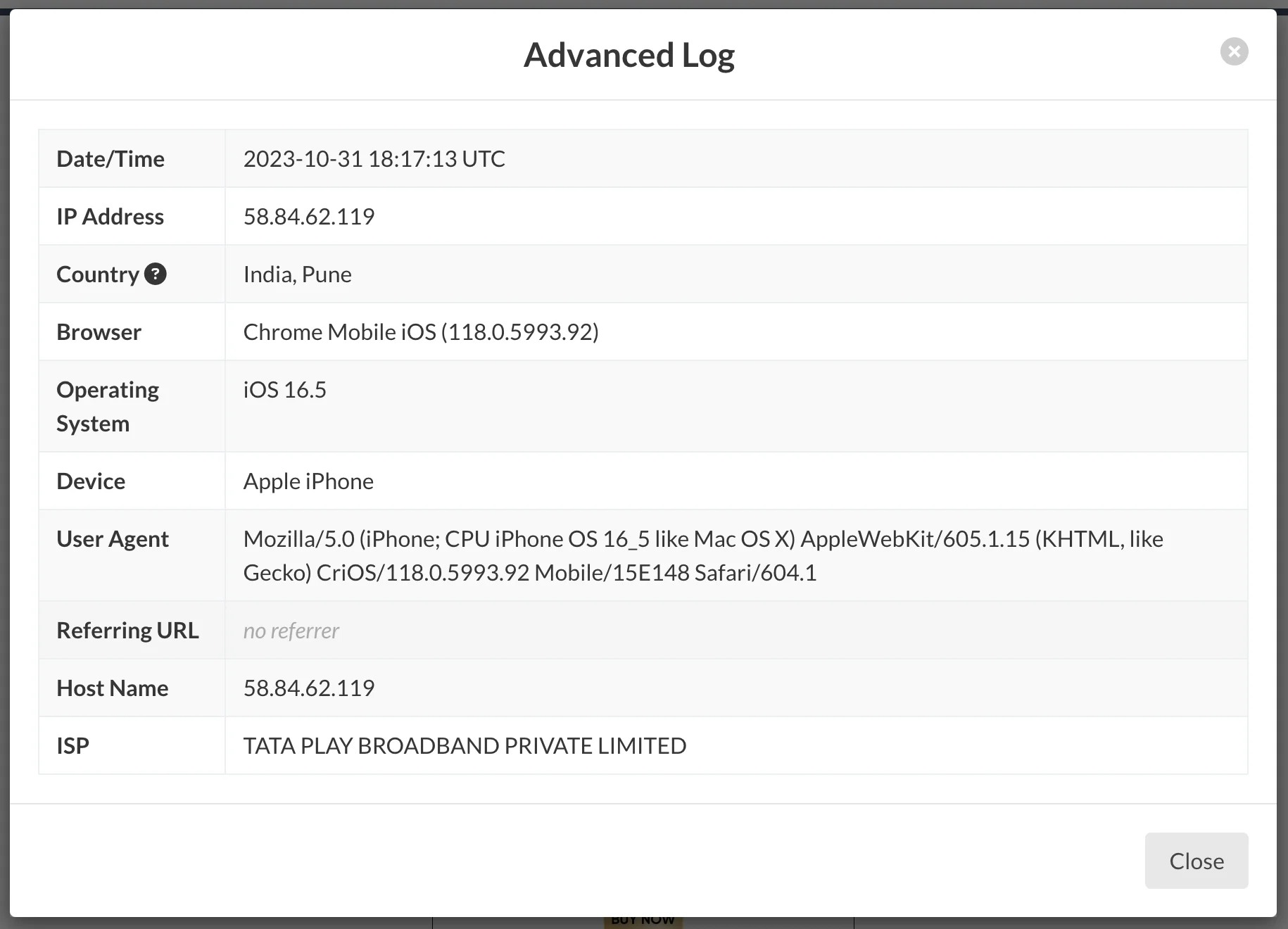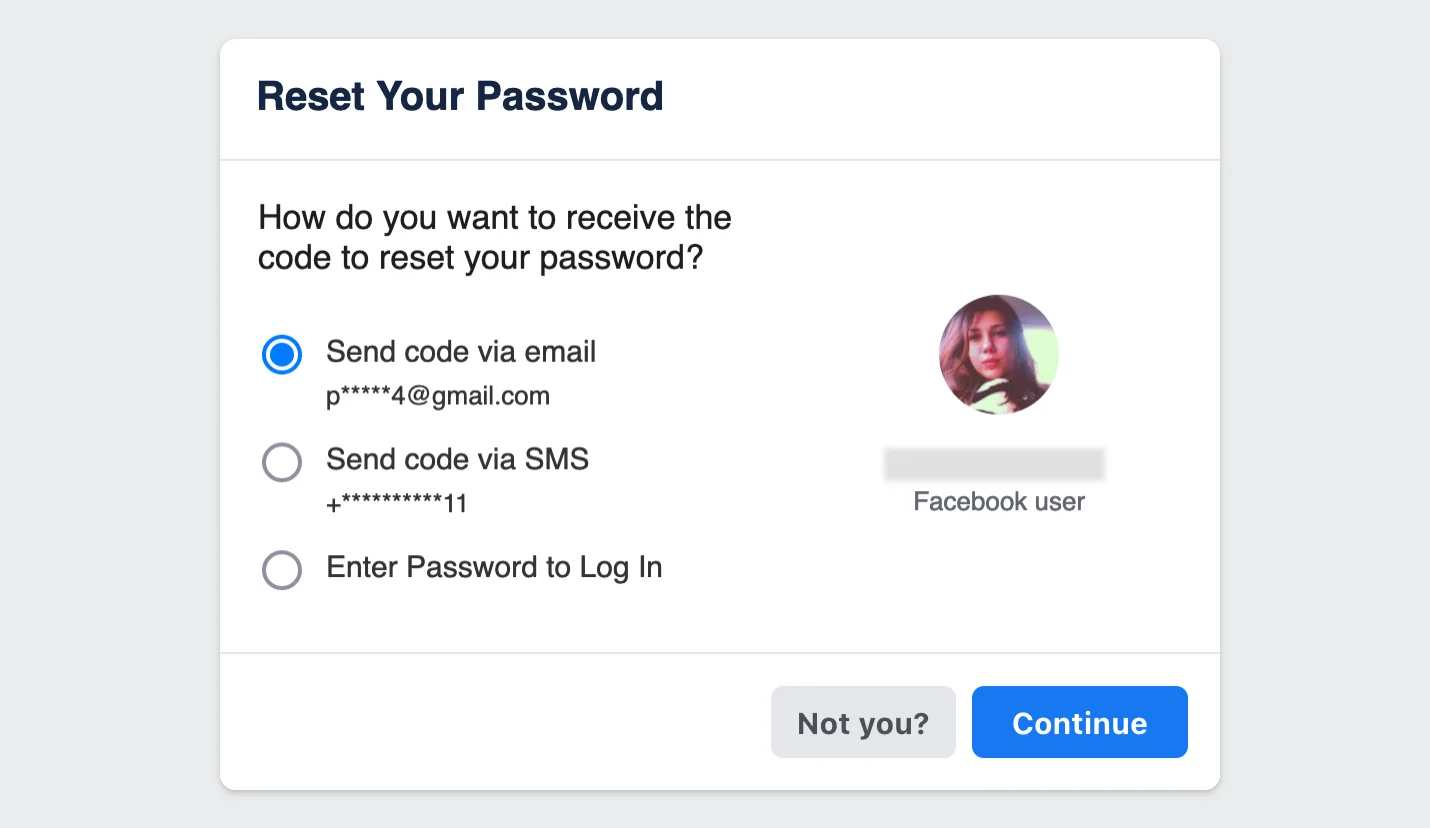A fake Facebook account can be a source of concern, especially if they’re impersonating someone or spreading misinformation. While it’s important to respect privacy, there are legitimate reasons for wanting to know who is behind a fake Facebook profile.
So how do you expose a real person behind a fake Facebook account?
The easiest way to find out who is behind a fake Facebook account is to start by tracing their IP address. This process can reveal a lot of information about the individual, including their location, device specifics, and internet service provider. Once you have these details, it becomes much simpler to draw connections to your friends or acquaintances.
By drawing connections to your friends or acquaintances, you can often deduce the real identity behind the fake profile. Compare the obtained information with what you know about your social circle. Look out for similarities in location, internet provider, or device details.
In this article, I will guide you on how to find the IP address of a fake Facebook account and trace it to help narrow down and expose their real identity. I have also discussed what to do when someone is impersonating you on Facebook and how to go about reporting and deleting a fake account.
Find IP Address of Fake Facebook Account
People make fake Facebook profiles for all kinds of reasons. Some folks do it to send out spam or to promote stuff and get fake likes for their pages. But there are also people who create fake accounts just to bother, spy on, or say mean things about others.
To find the IP address of a fake Facebook account, you’ll have to send them a message with a tracking link, and they’ll need to interact with it. So, depending on the nature of the fake account you’re dealing with, especially if it’s impersonating you, you might need assistance from a friend.
Here are the steps to finding the IP address of a fake Facebook account:
Step 1: Go to the Grabify website and enter any *URL in the text field, then click “Create URL” to generate the tracking link and code.
Note: The user will be redirected to this *URL once they click the tracking link.

Step 2: On the next page, you will get all the tracking information, as shown below. Save the ‘tracking code’ somewhere on your computer and copy the ‘New URL’.

Step 3: Next, go to Rebrandly and shorten your ‘New URL’ so that Facebook doesn’t detect the tracking link.
Note: Custom domains and extensions offered by Grabify will not work on Facebook as the platform flags them and doesn’t allow you to send them via chat or messages.
Step 4: Once the tracking link is ready, initiate casual conversations with the fake Facebook account via Messenger to gain their trust.
Step 5: Send them the tracking URL along with an attractive caption to encourage them to click on the tracking link. As soon as the fake account user clicks on the tracking link, their IP address will get logged on Grabify’s server.
Step 6: To check for the recorded IP, go to Grabify and enter your “tracking code” to view the results page. The IP address will be listed in the results section, as shown below.

Step 7: Click on the ‘More Info’ link, and you will get more details about the fake account user, as shown below.

Note: In order to complete this process, you must first become friends with the fake account user, engage them in light conversation, win their trust, and then persuade them to click the link you sent.
See also: How to find someone’s IP address on Facebook
Now let’s see how you can trace this fake Facebook user with the help of the information gathered from the above process.
How to Trace a Fake Facebook Account?
Tracing a fake Facebook account involves collecting comprehensive data about the account and then systematically comparing it against potential suspects.
For instance, if the fake user has configured a username on Facebook, it might provide clues like the last digits of a phone number or parts of an email address, which are visible on Facebook’s account recovery page. With this incredibly useful information, along with the IP address, you can easily trace a fake Facebook account. A step-by-step guide to this can be found below.

Here’s how you can trace fake Facebook accounts:
Step 1: Compile all details you’ve obtained from the IP logger tool about the fake Facebook account—IP address, geographical location (including country and city), the device used, the internet service provider (ISP), browser type, and operating system. If you haven’t collected this information yet, please see the previous section for guidance. Also, create a list of potential suspects who might be behind this fake Facebook account.
Step 2: Examine the profile URL (for example, www.facebook.com/username/) to determine if the fake account has a Facebook username. If there’s a username present, note it down. If not, you can skip step 3.
Step 3: Go to Facebook’s account recovery page. Enter the username there to reveal any linked phone numbers or email addresses. Although Facebook masks full contact details, recognizing the last two digits of a phone number or the first and last letters of an email can offer valuable hints connecting you to your list of suspects.

Step 4: If the recovery page doesn’t yield results, consider using an IP logger to send a link to each suspect. By doing this, you can capture their IP address information discretely.
Step 5: Now, compare the IP address and device data from the fake Facebook profile with the information from your suspects. More often than not, you’ll find overlapping details that help pinpoint the creator of the fake account, thereby successfully tracing the fake Facebook account.
Can Police Track Fake Facebook Accounts?
Absolutely, the police have the capacity to trace fake Facebook accounts, especially in serious matters that require immediate attention and investigation. However, this process involves a series of meticulous steps and cooperation from various entities.
1. Reporting and Contacting Facebook
When a fake Facebook account is reported, and law enforcement gets involved, the next crucial step is establishing communication with Facebook. The police provide all necessary details about the account in question, prompting an internal investigation by Facebook’s security team.
What Facebook Does: Facebook conducts a thorough analysis of the account. This includes tracking the IP address used to create and access the account, identifying the devices involved, and even scrutinizing the user’s private messages for any additional clues. The aim is to gather comprehensive data to help trace the origin of the fake account.
2. Law Enforcement and Legal Procedures
Obtaining the IP address is a significant step forward, but it is not the end of the road. Law enforcement agencies then need to obtain a court order. This court order is directed at the Internet Service Provider (ISP) connected to the traced IP address.
What Happens Next: With the court order in hand, the ISP is obliged to release information about the user associated with that particular IP address. This information typically includes the user’s billing address, essentially unmasking the individual behind the fake Facebook account.
3. The Challenge of Proxy Servers
It’s important to highlight a notable challenge in this process: proxy servers. If the user behind the fake account used a proxy server to mask their real IP address, tracing their real location becomes significantly more complex. Proxy servers act as an intermediary, hiding the user’s original IP address, and thereby, their actual location.
The Implication: While not impossible, tracing a user who has utilized a proxy server requires an additional layer of investigation and possibly, international cooperation, depending on the location of the proxy server.
You might also like: How to hack Facebook password
What to Do if Someone Makes a Fake Account of You on Facebook?
Discovering a fake Facebook profile bearing your name and photos can be an alarming experience. The first step is to act promptly. Reporting the account to Facebook is crucial and can be done directly through the platform’s reporting feature.
Someone created a fake Facebook account with my name and pictures. Please help me remove this account.
This is a plea I often hear from individuals reaching out through my website, and while it’s understandably distressing, it’s important to remember that impersonation is quite common on Facebook. With millions of users worldwide, the platform sees thousands of these reports daily. The good news is that Facebook has protocols in place to deal with these issues.
It’s essential to keep perspective: having a fake account created in your name, while frustrating, is not an unusual occurrence and, in most cases, is resolvable.
Here’s what you can do if you find yourself in this situation:
1. Confirm the Account is Fake: First, ensure that the account you’ve come across is indeed a fake and not someone who happens to have the same name or a similar appearance.
2. Gather Evidence: Take screenshots of the profile, any messages, and the URL of the fake account. This will be important when you report the account to Facebook.
3. Report the Profile to Facebook:
How to report a fake Facebook account? The platform has a specific process for reporting fake profiles:
- Click on the three dots on the profile page of the fake account.
- Choose “Find support or report profile.”
- Follow the prompts and select “Pretending to Be Someone” when it asks why you’re reporting the account.
- Facebook will then investigate your report.
4. Inform Your Friends and Family: Let people in your network know about the fake account so they can avoid engaging with it. You can post a status update or message them directly.
5. Gather Support: Mobilize your friends and acquaintances to report the fake account as well. The more reports Facebook receives regarding a particular profile, the quicker their response may be. Share the account link with close contacts and instruct them on how to report it.
6. Check Your Account Security: A fake account could be a sign of a security breach. Change your passwords and review your security settings. Enable two-factor authentication for an extra layer of security.
7. Search for Other Fake Accounts: Sometimes, imposters create multiple fake accounts across different platforms. Do a quick search on other social media to ensure there are no other impersonating profiles.
8. Keep Records: If the situation escalates, or if the impersonation leads to identity theft or defamation, keep all records and evidence. You may need them for legal purposes.
9. Consider Legal Action: If the impersonation continues or causes significant harm, consult with a legal professional to explore your options.
Remember, Facebook’s Community Standards prohibit impersonation, and the platform is generally responsive when it comes to removing fake accounts. Stay vigilant and maintain your privacy settings to help prevent impersonation in the future.
How to Delete a Fake Facebook Account Created by Others?
Deleting a fake Facebook account created by someone else can be done by reporting it directly to Facebook. Go to the profile, click on the three dots (…) on the cover photo, choose ‘Find support or report profile,’ and follow the instructions to report it as a fake account. Facebook will then investigate and take the necessary actions to remove the fake profile.
It’s important to know that Facebook takes these matters seriously, and there are actions you can take to report and ultimately remove the fake account.
Here are the steps to delete a fake Facebook account created by others:
- Identify the Fake Account: First, you need to be certain that the account in question is indeed fake. Look out for signs such as a lack of friends, no interaction on their posts, or photos that seem too good to be true. Pay attention to details and gather as much information as you can.
- Report the Account to Facebook: Once you’ve confirmed that the account is fake, the next step is reporting it to Facebook. Visit the profile, click on the three dots (…) on the cover photo, and select ‘Find support or report profile.’ Follow the prompts, selecting the reason for reporting. In this case, you might choose ‘Fake Account.’
- Provide Additional Information: Facebook might ask for additional information to assess your report. Be ready to provide any details you’ve gathered about why you believe this account is fake. This could include inconsistencies in their posts, suspicious activities, or any interactions they’ve had with you or others.
- Ask Friends to Report: Encourage friends who have also identified the fake account to report it. The more reports Facebook receives about the account, the quicker they are likely to review and take action.
- Contact Facebook Directly: If reporting through the regular channels does not yield results, you might consider contacting Facebook directly. You can visit their Help Center for more guidance on the steps you can take to report an issue.
- Remove Fake Facebook Account: Make sure that in your communications with Facebook, you explicitly ask for them to remove the fake account. Use clear and concise language to convey that this is a serious matter that requires urgent attention.
- Be Patient: Removing a fake Facebook account is a process that might take some time. Once you’ve reported the account, be patient and wait for Facebook to investigate and take appropriate action.
FAQs
Here are some frequently asked questions when it comes to exposing fake Facebook accounts:
Can you make a fake Facebook account?
Yes, technically, it is possible to create a fake Facebook account; however, it violates the platform’s policies and can result in the account being suspended or deleted.
Someone is impersonating me on Facebook. What do I do?
If someone is impersonating you on Facebook, report the fake profile via the ‘Report Profile’ option on the account’s cover photo menu. Facebook will review and potentially remove the impersonating account.
What happens when you report a fake account on Facebook?
When you report a fake account on Facebook, the report is reviewed by Facebook’s team. If the account is found to violate community standards, it may be restricted or removed, and the account holder could be warned or banned.
Facebook fake account checker online free; is it available?
No official Facebook fake account checker is available online. It’s best to report suspicious accounts directly through Facebook’s reporting tools.
How to find out who is behind a Facebook page?
Determining who is behind a Facebook page can be challenging. Pages often don’t display personal information, but sometimes you can glean insights from the page’s content, contact information, or linked websites.
How to find out who created a Facebook page?
Facebook does not publicly display the identity of page creators. However, you may contact the page directly to inquire, or occasionally the ‘About’ section will list the page owner or related administrators.
Fake Facebook friend request generator? Is it available?
There is no such service available. Using any service or software to generate fake Facebook friend requests is against Facebook’s policies and can lead to account suspension. Such services are not legally supported or endorsed.
How do I find out when I created my Facebook account?
To find out when you created your Facebook account, go to your profile, click on ‘About’ and then ‘Contact and Basic Info.’ Scroll down to the ‘Joined Facebook’ section to see the date you joined.
How to find out who sent an anonymous Facebook message?
Unmasking the sender of an anonymous Facebook message can be challenging, as Facebook protects user privacy. However, if you receive threatening messages, report them to Facebook and consider involving law enforcement who can request information through proper legal channels.
How to mess with a scammer on Facebook Messenger?
Engaging with scammers is not recommended, as it may lead to increased risk and exposure to further scams. The best course of action is to block the scammer and report them to Facebook, ensuring your safety and helping prevent others from being targeted.
Related Posts:
- How to find someones location on Facebook
- How to track someone on Facebook Messenger
- How to track someones IP address from Instagram
- Facebook locked profile viewer online
- Bypass Facebook malware checkpoint
- How to hack someones Facebook account
- The truth about Facebook Hack software
- How to bypass Facebook password
